Boyu Liu
Neural Field Classifiers via Target Encoding and Classification Loss
Mar 02, 2024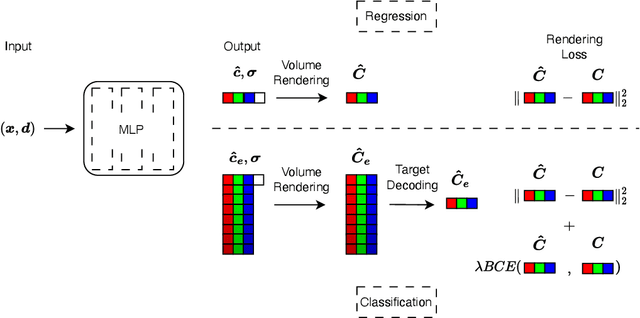
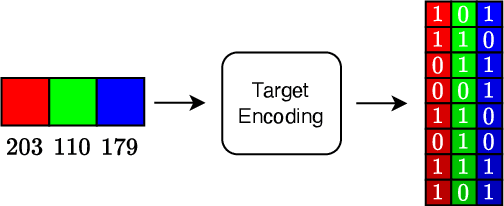
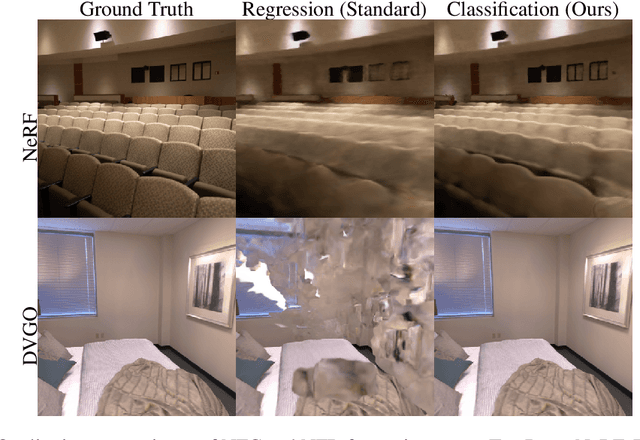
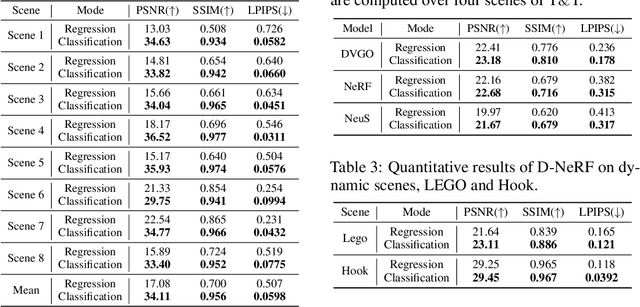
Abstract:Neural field methods have seen great progress in various long-standing tasks in computer vision and computer graphics, including novel view synthesis and geometry reconstruction. As existing neural field methods try to predict some coordinate-based continuous target values, such as RGB for Neural Radiance Field (NeRF), all of these methods are regression models and are optimized by some regression loss. However, are regression models really better than classification models for neural field methods? In this work, we try to visit this very fundamental but overlooked question for neural fields from a machine learning perspective. We successfully propose a novel Neural Field Classifier (NFC) framework which formulates existing neural field methods as classification tasks rather than regression tasks. The proposed NFC can easily transform arbitrary Neural Field Regressor (NFR) into its classification variant via employing a novel Target Encoding module and optimizing a classification loss. By encoding a continuous regression target into a high-dimensional discrete encoding, we naturally formulate a multi-label classification task. Extensive experiments demonstrate the impressive effectiveness of NFC at the nearly free extra computational costs. Moreover, NFC also shows robustness to sparse inputs, corrupted images, and dynamic scenes.
MFMAN-YOLO: A Method for Detecting Pole-like Obstacles in Complex Environment
Jul 24, 2023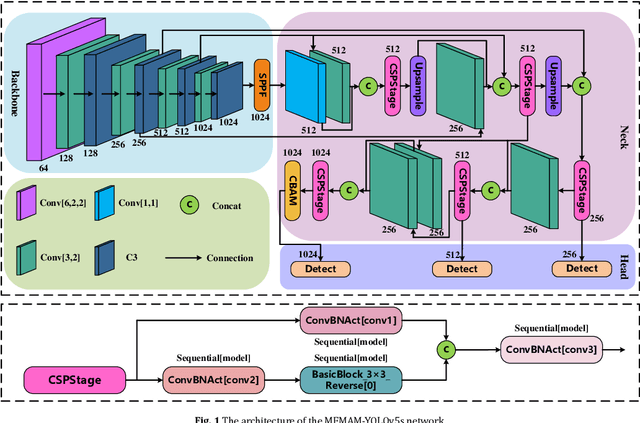

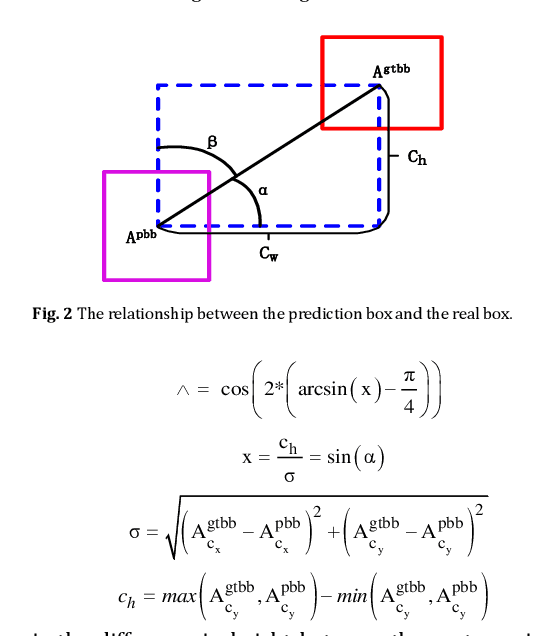
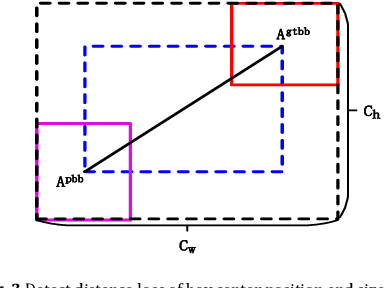
Abstract:In real-world traffic, there are various uncertainties and complexities in road and weather conditions. To solve the problem that the feature information of pole-like obstacles in complex environments is easily lost, resulting in low detection accuracy and low real-time performance, a multi-scale hybrid attention mechanism detection algorithm is proposed in this paper. First, the optimal transport function Monge-Kantorovich (MK) is incorporated not only to solve the problem of overlapping multiple prediction frames with optimal matching but also the MK function can be regularized to prevent model over-fitting; then, the features at different scales are up-sampled separately according to the optimized efficient multi-scale feature pyramid. Finally, the extraction of multi-scale feature space channel information is enhanced in complex environments based on the hybrid attention mechanism, which suppresses the irrelevant complex environment background information and focuses the feature information of pole-like obstacles. Meanwhile, this paper conducts real road test experiments in a variety of complex environments. The experimental results show that the detection precision, recall, and average precision of the method are 94.7%, 93.1%, and 97.4%, respectively, and the detection frame rate is 400 f/s. This research method can detect pole-like obstacles in a complex road environment in real time and accurately, which further promotes innovation and progress in the field of automatic driving.
Face Animation with an Attribute-Guided Diffusion Model
Apr 06, 2023
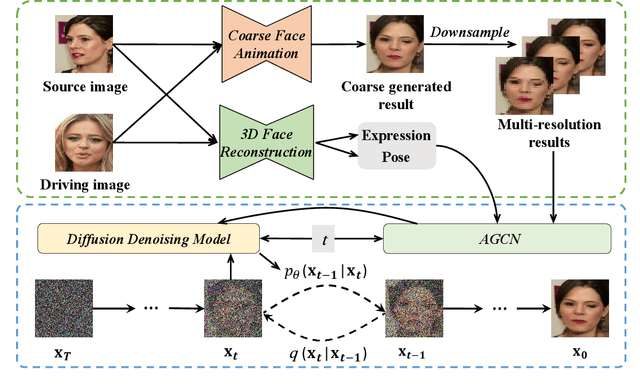

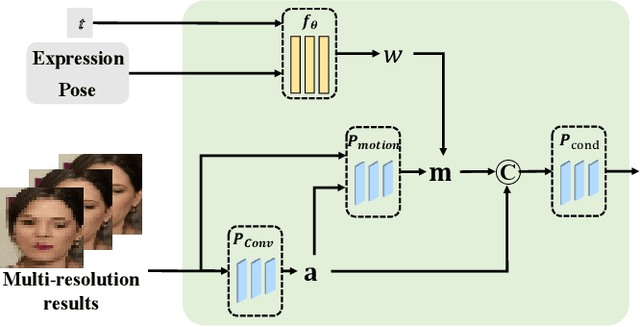
Abstract:Face animation has achieved much progress in computer vision. However, prevailing GAN-based methods suffer from unnatural distortions and artifacts due to sophisticated motion deformation. In this paper, we propose a Face Animation framework with an attribute-guided Diffusion Model (FADM), which is the first work to exploit the superior modeling capacity of diffusion models for photo-realistic talking-head generation. To mitigate the uncontrollable synthesis effect of the diffusion model, we design an Attribute-Guided Conditioning Network (AGCN) to adaptively combine the coarse animation features and 3D face reconstruction results, which can incorporate appearance and motion conditions into the diffusion process. These specific designs help FADM rectify unnatural artifacts and distortions, and also enrich high-fidelity facial details through iterative diffusion refinements with accurate animation attributes. FADM can flexibly and effectively improve existing animation videos. Extensive experiments on widely used talking-head benchmarks validate the effectiveness of FADM over prior arts.
Cybersecurity Challenges of Power Transformers
Feb 25, 2023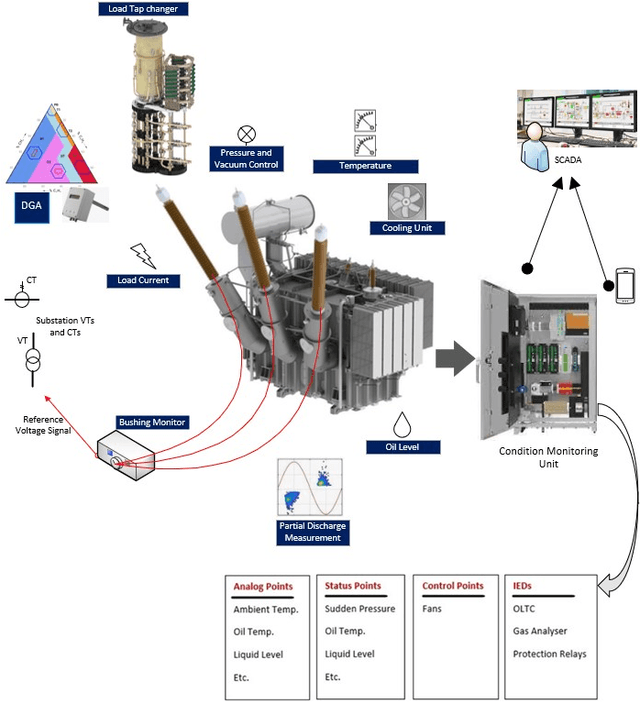
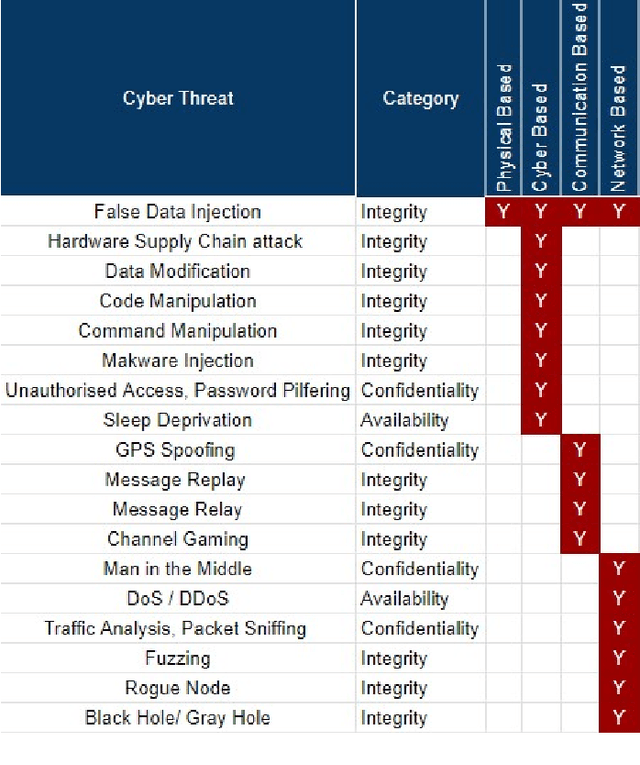
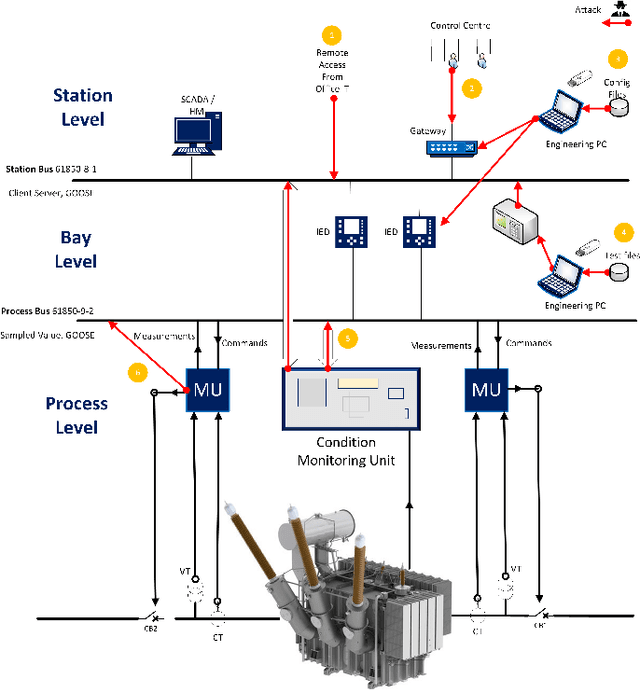
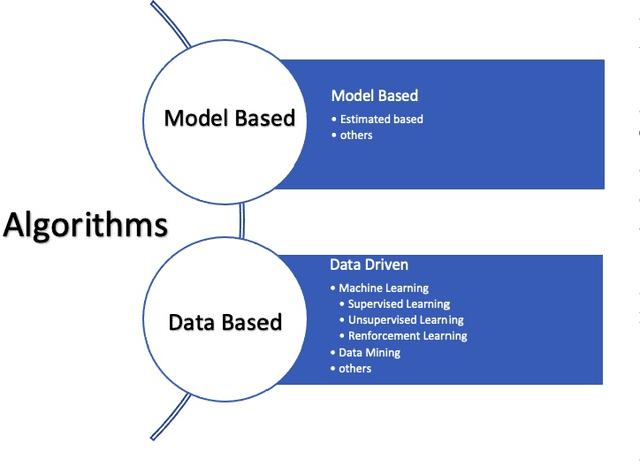
Abstract:The rise of cyber threats on critical infrastructure and its potential for devastating consequences, has significantly increased. The dependency of new power grid technology on information, data analytic and communication systems make the entire electricity network vulnerable to cyber threats. Power transformers play a critical role within the power grid and are now commonly enhanced through factory add-ons or intelligent monitoring systems added later to improve the condition monitoring of critical and long lead time assets such as transformers. However, the increased connectivity of those power transformers opens the door to more cyber attacks. Therefore, the need to detect and prevent cyber threats is becoming critical. The first step towards that would be a deeper understanding of the potential cyber-attacks landscape against power transformers. Much of the existing literature pays attention to smart equipment within electricity distribution networks, and most methods proposed are based on model-based detection algorithms. Moreover, only a few of these works address the security vulnerabilities of power elements, especially transformers within the transmission network. To the best of our knowledge, there is no study in the literature that systematically investigate the cybersecurity challenges against the newly emerged smart transformers. This paper addresses this shortcoming by exploring the vulnerabilities and the attack vectors of power transformers within electricity networks, the possible attack scenarios and the risks associated with these attacks.
FNeVR: Neural Volume Rendering for Face Animation
Sep 21, 2022

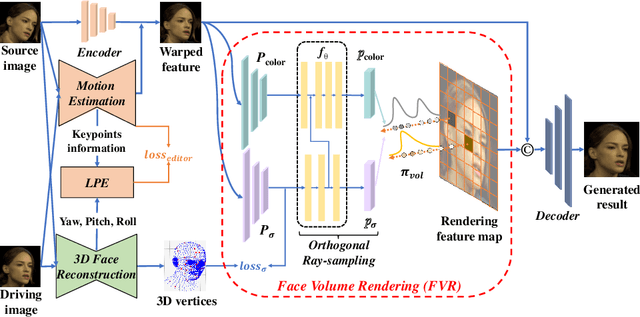
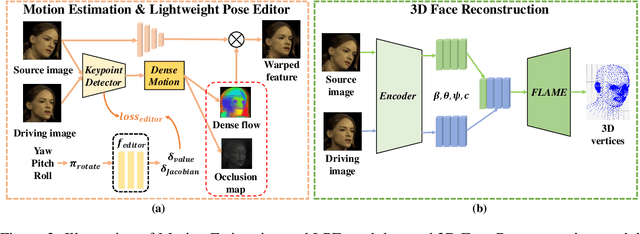
Abstract:Face animation, one of the hottest topics in computer vision, has achieved a promising performance with the help of generative models. However, it remains a critical challenge to generate identity preserving and photo-realistic images due to the sophisticated motion deformation and complex facial detail modeling. To address these problems, we propose a Face Neural Volume Rendering (FNeVR) network to fully explore the potential of 2D motion warping and 3D volume rendering in a unified framework. In FNeVR, we design a 3D Face Volume Rendering (FVR) module to enhance the facial details for image rendering. Specifically, we first extract 3D information with a well-designed architecture, and then introduce an orthogonal adaptive ray-sampling module for efficient rendering. We also design a lightweight pose editor, enabling FNeVR to edit the facial pose in a simple yet effective way. Extensive experiments show that our FNeVR obtains the best overall quality and performance on widely used talking-head benchmarks.
MAVOT: Memory-Augmented Video Object Tracking
Nov 26, 2017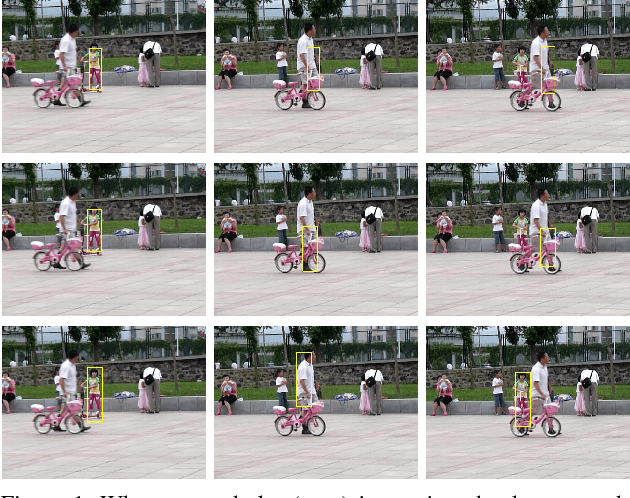

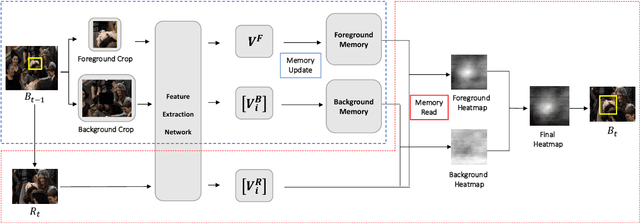
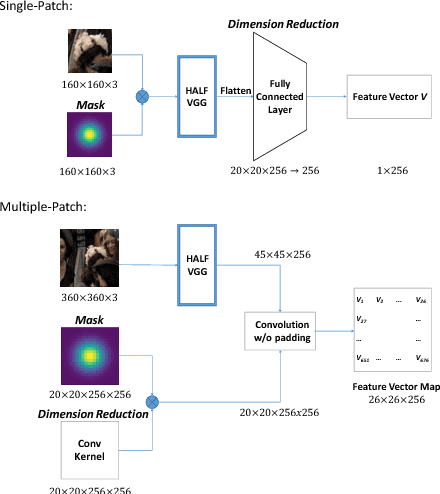
Abstract:We introduce a one-shot learning approach for video object tracking. The proposed algorithm requires seeing the object to be tracked only once, and employs an external memory to store and remember the evolving features of the foreground object as well as backgrounds over time during tracking. With the relevant memory retrieved and updated in each tracking, our tracking model is capable of maintaining long-term memory of the object, and thus can naturally deal with hard tracking scenarios including partial and total occlusion, motion changes and large scale and shape variations. In our experiments we use the ImageNet ILSVRC2015 video detection dataset to train and use the VOT-2016 benchmark to test and compare our Memory-Augmented Video Object Tracking (MAVOT) model. From the results, we conclude that given its oneshot property and simplicity in design, MAVOT is an attractive approach in visual tracking because it shows good performance on VOT-2016 benchmark and is among the top 5 performers in accuracy and robustness in occlusion, motion changes and empty target.
 Add to Chrome
Add to Chrome Add to Firefox
Add to Firefox Add to Edge
Add to Edge